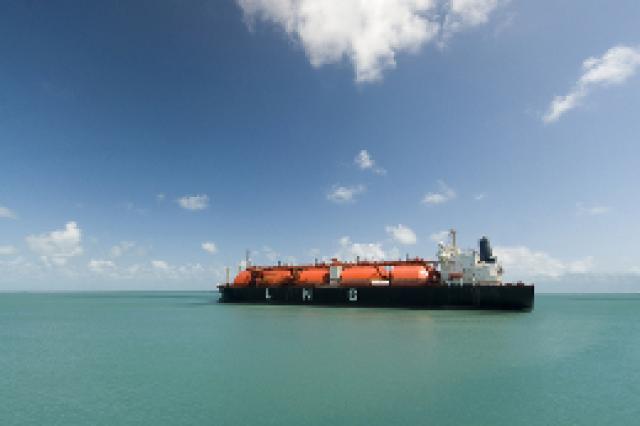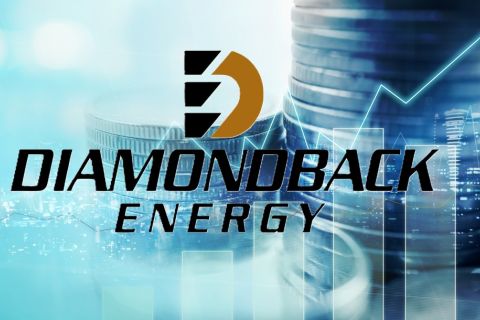
High costs for land-based LNG facilities are expected to push more companies toward more flexible, less expensive floating liquefaction plants as they bring natural gas supplies to market.
Those were the thoughts shared by Pangea LNG CEO Kathleen Eisbrenner, who spoke May 15 during the Mayer Brown Global Energy Conference in Houston.
“We can do things much more efficiently and less costly than traditional thinking. A traditional receiving terminal may cost about [US] $1.2 billion,” said Eisbrenner. “Or you can deliver a floating alternative for about $400,000 million, so one-third the cost – a substantial reduction. That is what has allowed a lot of countries to be able to afford it. But perhaps most importantly, especially here in the United States, is optionality.”
Currently, there are three floating liquefaction plants under construction; however, there are about 16 more projects under development, Eisbrenner said, noting eight of these are expected to be in the US. “Floating is going to be part of our future.”Other countries with such projects in the works include Australia, Brazil, Colombia, Indonesia, Israel, Malaysia, and Papua New Guinea. Two projects also are slated for the Timor Sea.
By 2015, five more floating liquefaction projects could emerge, according to Eisbrenner. These areas include Mozambique and Tanzania, where massive amounts of gas resources have been found. US Energy Information Administration (EIA) data show Mozambique holds about 4.5 Tcf of proven natural gas reserves onshore and offshore, while Tanzania has about 230 Bcf.
“Since 2010, there have been a series of natural gas discoveries in the offshore Rovuma basin that are large enough to support [LNG] projects,” the EIA said. “Anadarko and Italy-based Eni have led exploration activities in the area. Mozambique expects to begin exporting LNG to the global market in the next five to 10 years.”
Offshore Tanzania discoveries also have increased since 2010, boosting the likelihood that the country will become one of the world’s gas exporters. Others in the field could include the US, Canada, and the eastern Mediterranean region.
Countries importing LNG doubled from 2000 to 2010, going from 11 to 22, figures presented by Eisbrenner showed. More than 10 years ago, none of the LNG-importing countries used floating regasification units. However, that changed after the first floating regasification site’s debut in the Gulf of Mexico in 2005. Now, there are 12 floating regasification sites, and that number could grow to 40 or so by 2015.
“We think it is possible to build single billion dollar projects for modest amounts of LNG and be able to change the dynamics somewhat,” Eisbrenner said. She noted a new 4-million-ton LNG market can be created for about $400 million with floating infrastructure. “Liquefaction is 10 times as expensive [as regasification], 10 times as complex, 10 times more difficult, yet I think there is going to be a higher adoption rate associated with floating liquefaction than there has been with floating regasification.”
Costs and flexibility are big factors. Eisbrenner noted that perhaps only three companies in the world can afford $55 billion-type land-based LNG liquefaction plants.
Companies are already reconsidering options due to costs. In April, Woodside decided to drop plans for the onshore Browse LNG plant. After evaluating all upstream and downstream work associated with the development, Woodside said it determined “the development would not deliver the required commercial returns to support a positive final investment decision.”
Instead, Woodside is working with Shell for a possible floating LNG facility. Woodside CEO Peter Coleman said in a news release that floating LNG (FLNG) had the potential to commercialize the Browse resources in the earliest possible timeframe.
While floating infrastructure has many benefits, there also are some concerns. The March 2013 floating production report by International Maritime Associates (IMA) called the FLNG market sector “very young and uncertain.”
“There are a variety of technical and commercial issues that need to be successfully resolved before wide-scale viability of FLNG projects is established,” the report said. Some of these issues involve the FLNG topside plant size and weight along with limited use in sea environments due to vessel motion that impacts separation processes. Moreover, operation and maintenance costs are unknowns.
The IMA predicted eight FLNG orders will most likely be made during the next five years, given “(1) technical issues involving FLNGs are resolved, (2) global pricing of natural gas is not badly eroded by shale gas production, and (3) several of the FLNG export terminal projects in North America proceed.”
However, current numbers show “floating LNG has really been embraced by the industry, and it has been embraced for all the right reasons,” Eisbrenner said. “Today, 25% of importing countries use floating infrastructure as part of their infrastructure.” She estimated that could grow to 50% by 2015.
Contact the author, Velda Addison, at vaddison@hartenergy.com.
Recommended Reading
E&P Earnings Season Proves Up Stronger Efficiencies, Profits
2024-04-04 - The 2024 outlook for E&Ps largely surprises to the upside with conservative budgets and steady volumes.
Hess Corp. Boosts Bakken Output, Drilling Ahead of Chevron Merger
2024-01-31 - Hess Corp. increased its drilling activity and output from the Bakken play of North Dakota during the fourth quarter, the E&P reported in its latest earnings.
Petrie Partners: A Small Wonder
2024-02-01 - Petrie Partners may not be the biggest or flashiest investment bank on the block, but after over two decades, its executives have been around the block more than most.
CEO: Coterra ‘Deeply Curious’ on M&A Amid E&P Consolidation Wave
2024-02-26 - Coterra Energy has yet to get in on the large-scale M&A wave sweeping across the Lower 48—but CEO Tom Jorden said Coterra is keeping an eye on acquisition opportunities.
Endeavor Integration Brings Capital Efficiency, Durability to Diamondback
2024-02-22 - The combined Diamondback-Endeavor deal is expected to realize $3 billion in synergies and have 12 years of sub-$40/bbl breakeven inventory.





